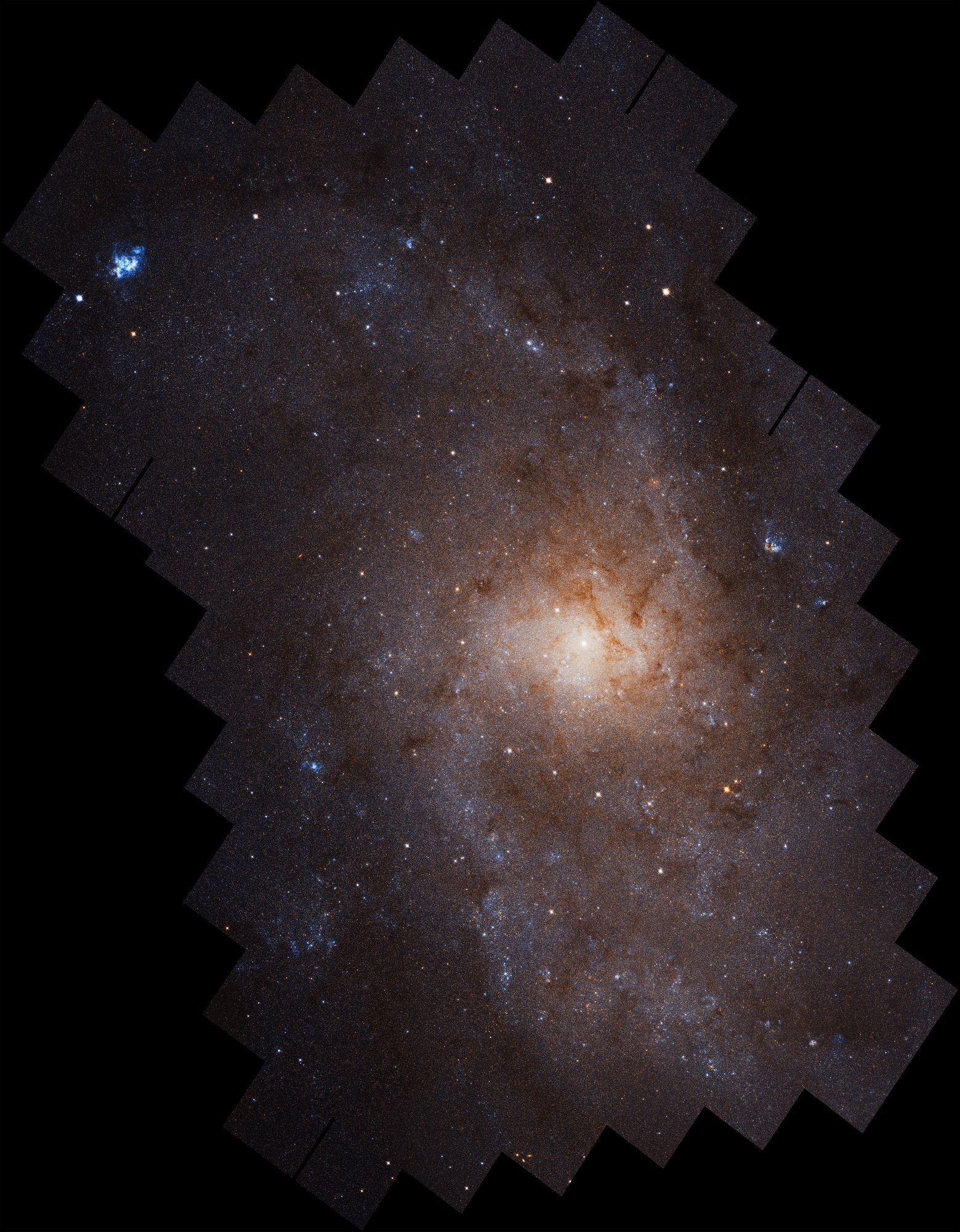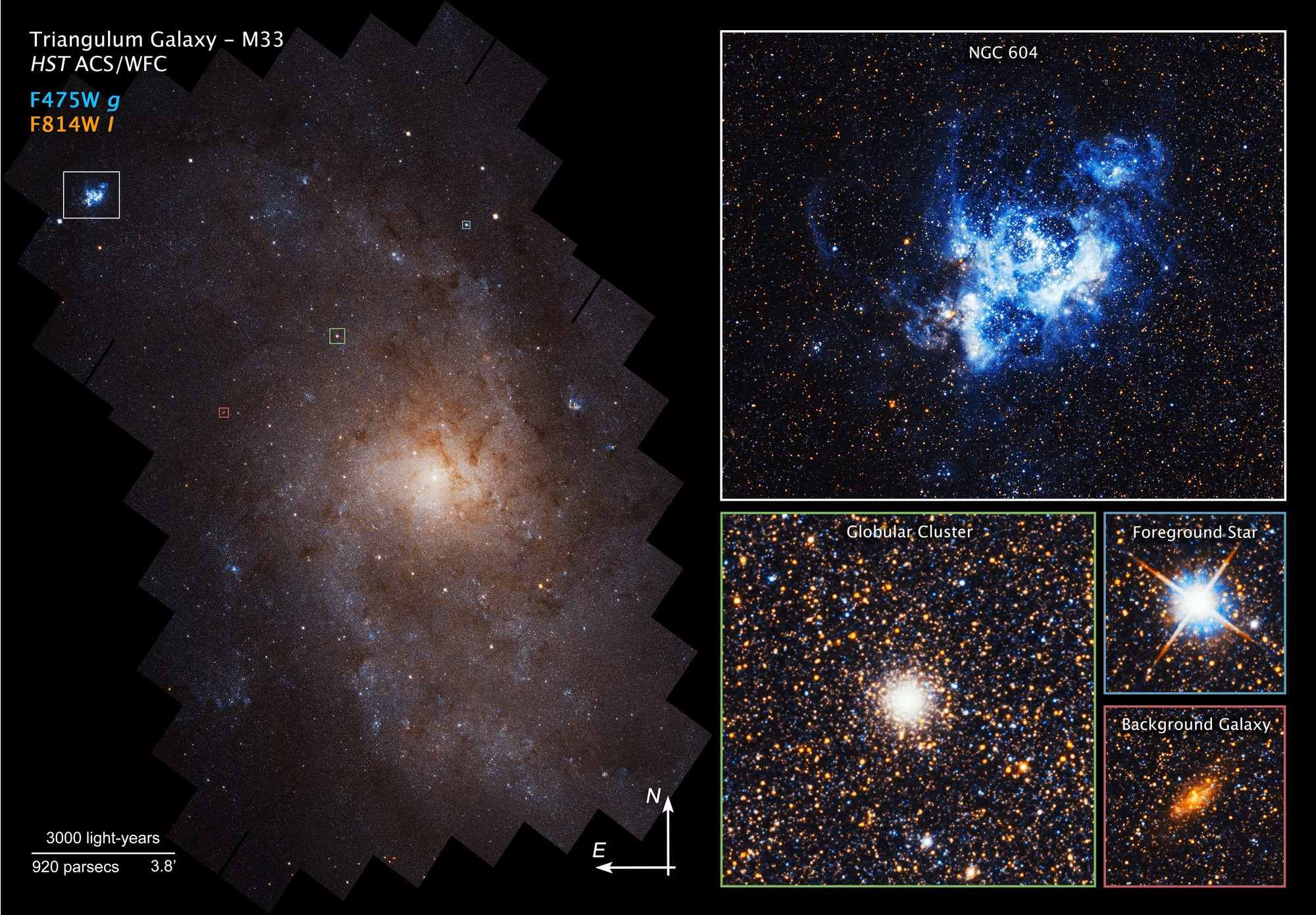Triangulum Galaxy Reveals Stunning Stellar Symmetry in Amazing Hubble Telescope Views
Time to change your desktop pictures. The Hubble Space Telescope has produced an amazing panoramic image of the Triangulum Galaxy, one of the closest galactic neighbors to Earth.
The famed space observatory captured a swirling spiral of stars in 54 fields of view, capturing data across a span of some 19,000 light-years, Hubble researchers said in a statement. (One light-year is the distance light travels in a year, about 6 trillion miles, or 10 trillion kilometers.)
The result is a huge picture of Triangulum — also called M33 — that encompasses some 25 million viewable stars. While the image is an art piece in itself, astronomers will use it to learn more about the neighborhood near the Milky Way, which is our own galaxy.
Triangulum is one of several galaxies near the Earth, residing in a zone known as the Local Group. The group includes dozens of members, but is dominated by the big three galaxies of Andromeda (which Hubble also captured in high resolution in 2015), the Milky Way and Triangulum.
Triangulum's star formation is about 10 times more intense than what was captured in Hubble's picture of Andromeda, so astronomers say the new picture of Triangulum will uncover some of the mechanisms of that star formation, according to the statement.
"Astronomers think that in the Local Group, Triangulum has been something of an introvert, isolated from frequent interactions with other galaxies while keeping busy producing stars along organized spiral arms. Uncovering the Triangulum Galaxy's story will provide an important point of reference in understanding how galaxies develop over time, and the diverse paths that shape what we see today," researchers said in the statement.
Hubble is nearing 30 years of operations this year since its launch in 1990, and remains in excellent health. NASA has said operations should continue even beyond the launch of the next-generation James Webb Space Telescope, which is currently scheduled for launch in 2021.
Breaking space news, the latest updates on rocket launches, skywatching events and more!
Follow us on Twitter @Spacedotcom and on Facebook. Original article on Space.com.

Elizabeth Howell (she/her), Ph.D., was a staff writer in the spaceflight channel between 2022 and 2024 specializing in Canadian space news. She was contributing writer for Space.com for 10 years from 2012 to 2024. Elizabeth's reporting includes multiple exclusives with the White House, leading world coverage about a lost-and-found space tomato on the International Space Station, witnessing five human spaceflight launches on two continents, flying parabolic, working inside a spacesuit, and participating in a simulated Mars mission. Her latest book, "Why Am I Taller?" (ECW Press, 2022) is co-written with astronaut Dave Williams.


